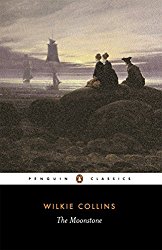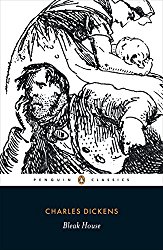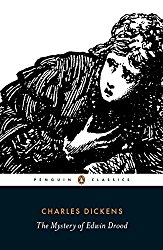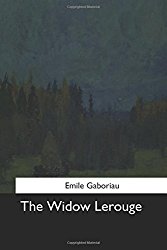Development: The In-Between Years
After Poe, who died in 1845, the next great step forward in the development of the detective story didn't happen until the 1860s when two brothers-in-law -- both authors -- produced several works that contributed to the form. You may have heard of them -- Wilkie Collins and Charles Dickens
Wilkie Collins and Charles Dickens
William Wilkie Collins (Jan. 8, 1824 to Sep. 23, 1889) produced two books of note. The Woman in White (1860) is a classic mystery, though not a detective novel proper. However, The Moonstone (1868), which introduces Sergeant Cuff, is a superlative detective novel that is highly praised by many critics and reviewers.
T.S. Elliot says The Moonstone is "the first, the longest, and the best of detective novels." Haycraft says, "Mr. Eliot is inaccurate in his first adjective, a little rash perhaps in his second, but unlikely to meet with much disagreement over his third" (The Art of the Mystery Story, p. 458).
|
Oliver Wendell Holmes called The Moonstone "The best there is," and Dorothy Sayers believes it is "Probably the very finest detective story ever written" and "comes about as near perfection as anything of its kind can be" (The Omnibus of Crime). According to Howard Haycraft, Dorothy Sayers "justly considers [The Moonstone] the finest detective story ever written." Sayers says that, in 1867, Charles Dickens "had pronounced The Moonstone: 'Much better than anything he [Collins] has done." |
Click Image to Click the image below to |
|
Click Image to Click the image below to Click Image to Click the image below to |
Not to be outdone, Charles Dickens -- who had already developed a detective named Inspector Bucket for his novel Bleak House (1853) -- wanted to create an even more mysterious work. He succeeded well beyond his own expectations, writing a book that is perhaps the most mysterious murder mystery of them all -- The Mystery of Edwin Drood (1870). Edmund Pearson calls The Mystery of Edwin Drood "the foremost problem in fiction." There is good reason for this. As many of you probably know, Dickens was publishing the story in serial form and died of a heart attack before it was completed. He left no notes, and told no one his intended outcome. G.K. Chesterton says, "The only one of Dickens' novels which he did not finish was the only one that really needed finishing. He never had but one thoroughly good plot to tell; and that he has told only in heaven." |
Emile Gaboriau
Emile Gaboriau (Nov. 9, 1833 to Sep. 28, 1873) took the next great step in the development of the detective story. Willard Huntington Wright says that Gaboriau "remains to-day the foremost writer of detective fiction during the period following Poe and Collins" (The Great Detective Stories, 1927). Gaboriau's influences included Poe, Vidocq, Voltaire's Zadig, and Eugene Sue (January 20, 1804 to August 3, 1857). Sue was the author of the influential Les Mysteres de Paris (10 volumes, 1844-1845 -- English Translation:The Mysteries of Paris).
|
Gaboriau's highly readable books include L'Affaire Lerouge (1866) (English Translation: The Widow Lerouge.) Willard Huntington Wright says, "It was not until the appearance of ... [The Widow Lerouge]...that the first great stride in the detective novel's development was taken" (The Great Detective Stories). In this book, Gaboriau introduced a young Monsieur Lecoq -- later to become a celebrated master detective in his own right. In this book, however, he doesn't take center stage. Instead, he convinces the police to consult his mentor Pere Tabaret. At the conclusion of this book, Pere Tabaret retires and Monsieur Lecoq remains in the forefront through a number of books. (Read an article about The Widow Lerouge.) |
- Le Dossier 113 (1867) (File No. 113) (See an article about File No. 113 here.)
- Le Crime d'Orcival (1868) (The Crime of Orcival)
- Monsieur Lecoq (1869)-- (Monsieur Lecoq) Willard Huntington Wright says that Monsieur Lecoq "will always remain one of the world's foremost detective stories" (The Great Detective Stories). - H. Douglas Thomson says of Lecoq "Here is Inspector French's prototype" (The Art of the Mystery Story, p. 459, n).
- Les Enclaves de Paris (1869)
Amazon and the Amazon logo are trademarks of Amazon.com, Inc. or its affiliates.
(This is a link through which I make a small commission if you buy. See here for more details.)




